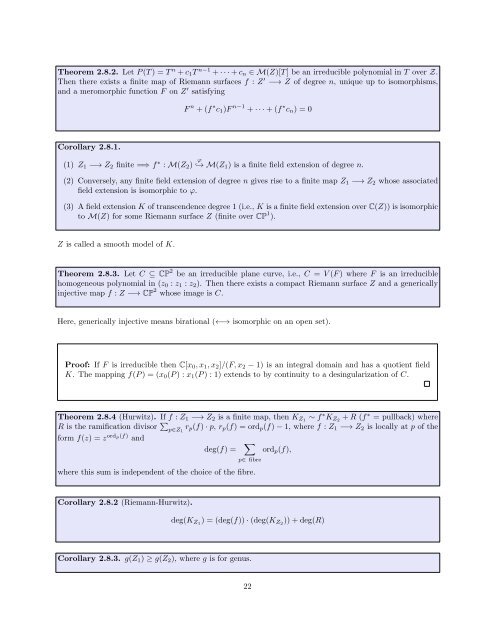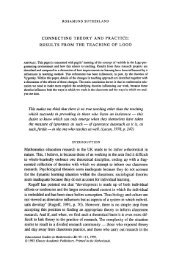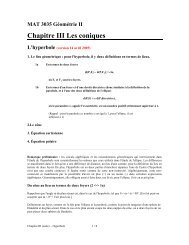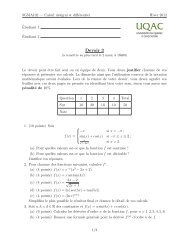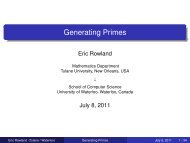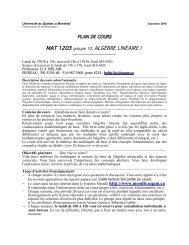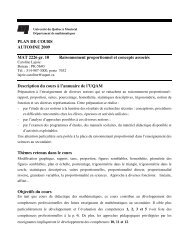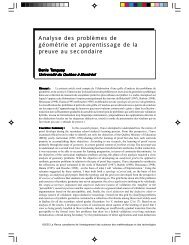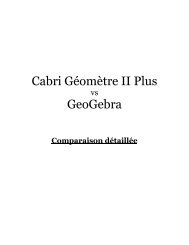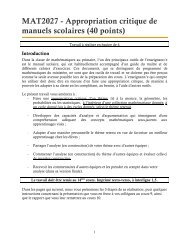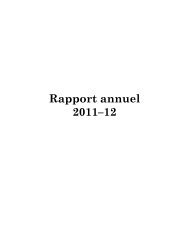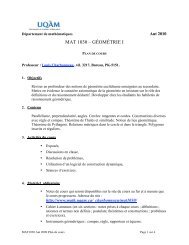COMPLEX GEOMETRY Course notes
COMPLEX GEOMETRY Course notes
COMPLEX GEOMETRY Course notes
Create successful ePaper yourself
Turn your PDF publications into a flip-book with our unique Google optimized e-Paper software.
Theorem 2.8.2. Let P (T ) = T n + c 1 T n−1 + · · · + c n ∈ M(Z)[T ] be an irreducible polynomial in T over Z.<br />
Then there exists a finite map of Riemann surfaces f : Z ′ −→ Z of degree n, unique up to isomorphisms,<br />
and a meromorphic function F on Z ′ satisfying<br />
F n + (f ∗ c 1 )F n−1 + · · · + (f ∗ c n ) = 0<br />
Corollary 2.8.1.<br />
(1) Z 1 −→ Z 2 finite =⇒ f ∗ : M(Z 2 ) ϕ<br />
↩→ M(Z 1 ) is a finite field extension of degree n.<br />
(2) Conversely, any finite field extension of degree n gives rise to a finite map Z 1 −→ Z 2 whose associated<br />
field extension is isomorphic to ϕ.<br />
(3) A field extension K of transcendence degree 1 (i.e., K is a finite field extension over C(Z)) is isomorphic<br />
to M(Z) for some Riemann surface Z (finite over CP 1 ).<br />
Z is called a smooth model of K.<br />
Theorem 2.8.3. Let C ⊆ CP 2 be an irreducible plane curve, i.e., C = V (F ) where F is an irreducible<br />
homogeneous polynomial in (z 0 : z 1 : z 2 ). Then there exists a compact Riemann surface Z and a generically<br />
injective map f : Z −→ CP 2 whose image is C.<br />
Here, generically injective means birational (←→ isomorphic on an open set).<br />
Proof: If F is irreducible then C[x 0 , x 1 , x 2 ]/(F, x 2 − 1) is an integral domain and has a quotient field<br />
K. The mapping f(P ) = (x 0 (P ) : x 1 (P ) : 1) extends to by continuity to a desingularization of C.<br />
Theorem 2.8.4 (Hurwitz). If f : Z 1 −→ Z 2 is a finite map, then K Z1 ∼ f ∗ K Z2 + R (f ∗ = pullback) where<br />
R is the ramification divisor ∑ p∈Z 1<br />
r p (f) · p, r p (f) = ord p (f) − 1, where f : Z 1 −→ Z 2 is locally at p of the<br />
form f(z) = z ordp(f) and<br />
deg(f) =<br />
∑<br />
ord p (f),<br />
p∈ fibre<br />
where this sum is independent of the choice of the fibre.<br />
Corollary 2.8.2 (Riemann-Hurwitz).<br />
deg(K Z1 ) = (deg(f)) · (deg(K Z2 )) + deg(R)<br />
Corollary 2.8.3. g(Z 1 ) ≥ g(Z 2 ), where g is for genus.<br />
22


